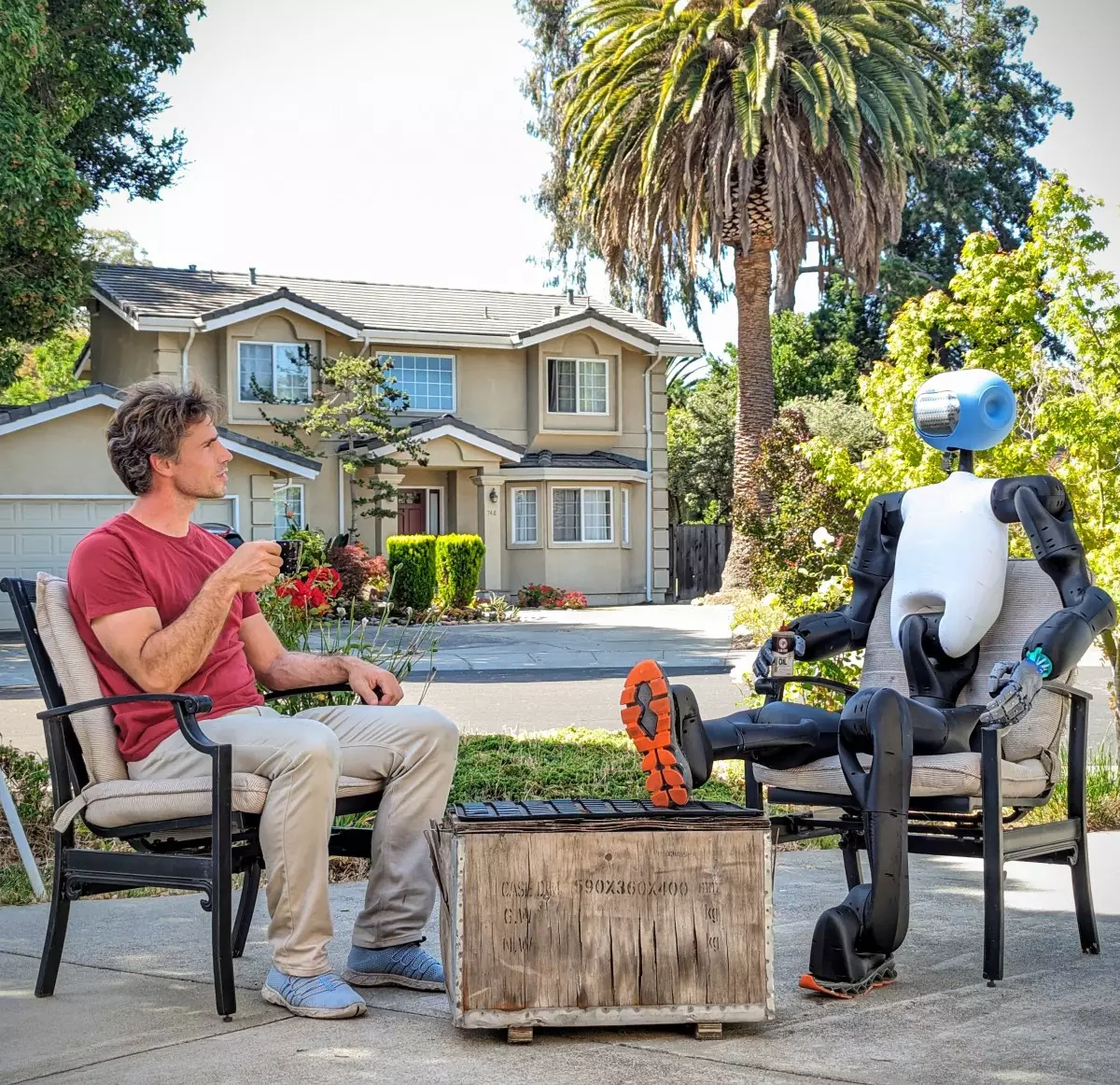Nestled within the bustling tech landscape of Palo Alto, a seemingly chaotic garage transforms into a hub of innovation. Christoph Kohstall’s workspace is adorned with eclectic robotics components that, at first glance, appear more reminiscent of a DIY science endeavor than groundbreaking technology. This multifaceted environment houses everything from electrical circuits adorned with blinking lights to a collection of machining tools. At first, the sight can be overwhelming: a bipedal robot, half-formed, looms in the background, while the unassuming presence of an $80 coat rack reveals the team’s playful yet functional approach to problem-solving.
While many tech startups occupy sleek offices reflective of their sophisticated aspirations, Kind Humanoid takes pride in a more grassroots methodology. The spirit of early Silicon Valley innovation, which thrived on experimentation with modest resources, still pulses through the walls of Kohstall’s garage. The ongoing development projects—often raw and unfinished—underscore a commitment to creative engineering over polished facades. This unconventional approach invites curiosity and intrigue, particularly as Kind Humanoid embarks on its unique journey to develop a humanoid robot named Mona.
Kohstall’s background contrasts sharply with the DIY aesthetic of his workspace. With an impressive tenure at Google Brain under his belt, he blends academic prowess with practical innovation. Recently, renowned designer Yves Béhar—a pivotal figure in Kind’s trajectory—brought fresh visibility to the startup with his imaginative designs for Mona. His visit in late 2022 encapsulated the enchanting blend of technology and artistry present in Kohstall’s workspace, where 3D printing and robotics intertwine in a dance of creation.
Béhar’s recent renderings for Mona represent a break from traditional humanoid robotics. With a whimsical design evoking the work of Belgian surrealist René Magritte, the robot features a sleek body combined with peculiar foot shapes, highlighting its playful yet functional attitude. Rather than crafting an uncanny doppelganger of humanity, the creators intentionally designed Mona to evoke curiosity while bypassing the uncomfortable uncanny valley. Béhar emphasizes the importance of visual cues to communicate the robot’s intentions, allowing it to connect with people on a more meaningful level.
Unlike many of its competitors, Kind Humanoid is steering clear of the industrial robotics market, which is characterized by heavy investment and fierce competition. Instead, Kohstall’s team has identified a more personal market that remains largely unaddressed: home care for the elderly. The decision to focus on domestic applications not only sets Kind apart but also aligns with a growing societal trend towards aging in place. This market represents a wealth of opportunities for those looking to maintain independence while relying on the assistance of smart technology.
The challenges faced in developing robots for home use are substantial, yet they are not insurmountable. Kind Humanoid intends to create a robot tailored to navigate the complexities of everyday home life, such as stairs and clutter. Kohstall’s assertion that the humanoid format presents unique advantages in these environments speaks to a broader vision of robotics that prioritizes functionality and adaptability rather than mere aesthetic appeal.
As Kind prepares to engage with potential customers—care facilities and family homes—there is an air of excitement mingled with apprehension. Kohstall reveals plans to complete a dozen prototypes of Mona slated for initial field tests soon. This phase will test the robot’s interaction with real-world environments, facilitating crucial learning opportunities to refine its design and functionality.
Interestingly, Kind Humanoid’s approach to funding diverges from the traditional Silicon Valley mindset. Rather than aggressively pursuing investment at the expense of focus, Kohstall promotes a philosophy of capital efficiency rooted in trial and error. He champions the idea that significant innovation often requires iteration built through hands-on experimentation rather than simple cash infusion. This perspective underscores a refreshing rebelliousness against the pressures of startup culture, creating room for authentic creativity in robotics.
Through the lens of Kind Humanoid’s journey, we observe not just a quest for financial success but a passionate commitment to advancing domestic robotics in a responsible, human-centered way. Kohstall’s contrasting style of merging the DIY ethos with professional ambition underscores a new wave of innovation, promising to reshape both the perception and utility of humanoid robots in our homes and lives.

